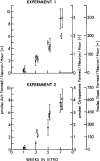On the Road from Phenotypic Plasticity to Stem Cell Therapy
- PMID: 33958488
- PMCID: PMC8221603
- DOI: 10.1523/JNEUROSCI.0340-21.2021
On the Road from Phenotypic Plasticity to Stem Cell Therapy
Abstract
In 1981, I published a paper in the first issue of The Journal of Neuroscience with my postdoctoral mentor, Richard Bunge. At that time, the long-standing belief that each neuron expressed only one neurotransmitter, known as Dale's Principle (Dale, 1935), was being hotly debated following a report by French embryologist Nicole Le Douarin showing that neural crest cells destined for one transmitter phenotype could express characteristics of another if transplanted to alternate sites in the developing embryo (Le Douarin, 1980). In the Bunge laboratory, we were able to more directly test the question of phenotypic plasticity in the controlled environment of the tissue culture dish. Thus, in our paper, we grew autonomic catecholaminergic neurons in culture under conditions which promoted the acquisition of cholinergic traits and showed that cells did not abandon their inherited phenotype to adopt a new one but instead were capable of dual transmitter expression. In this Progressions article, I detail the path that led to these findings and how this study impacted the direction I followed for the next 40 years. This is my journey from phenotypic plasticity to the promise of a stem cell therapy.
Copyright © 2021 the authors.
Figures




Similar articles
-
Efficient derivation of human neuronal progenitors and neurons from pluripotent human embryonic stem cells with small molecule induction.J Vis Exp. 2011 Oct 28;(56):e3273. doi: 10.3791/3273. J Vis Exp. 2011. PMID: 22064669 Free PMC article.
-
Human neural crest stem cells derived from human pluripotent stem cells.Methods Mol Biol. 2014;1210:79-90. doi: 10.1007/978-1-4939-1435-7_7. Methods Mol Biol. 2014. PMID: 25173162
-
Cell-based therapy for Parkinson's disease: A journey through decades toward the light side of the Force.Eur J Neurosci. 2019 Feb;49(4):463-471. doi: 10.1111/ejn.14109. Epub 2018 Sep 9. Eur J Neurosci. 2019. PMID: 30099795 Free PMC article. Review.
-
Improved cell therapy protocols for Parkinson's disease based on differentiation efficiency and safety of hESC-, hiPSC-, and non-human primate iPSC-derived dopaminergic neurons.Stem Cells. 2013 Aug;31(8):1548-62. doi: 10.1002/stem.1415. Stem Cells. 2013. PMID: 23666606 Free PMC article.
-
The stemness of neural crest cells and their derivatives.Birth Defects Res C Embryo Today. 2014 Sep;102(3):251-62. doi: 10.1002/bdrc.21079. Epub 2014 Sep 15. Birth Defects Res C Embryo Today. 2014. PMID: 25219876 Review.
References
-
- Cai J, Donaldson A, Yang M, German MS, Enikolopov G, Iacovitti L (2009) The role of Lmx1a in the differentiation of human embryonic stem cells into midbrain dopamine neurons in culture and after transplantation into a Parkinson's disease model. Stem Cells 27:220–229. 10.1634/stemcells.2008-0734 - DOI - PubMed
Publication types
MeSH terms
Grants and funding
LinkOut - more resources
Full Text Sources
Other Literature Sources
